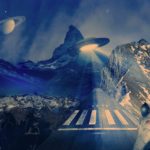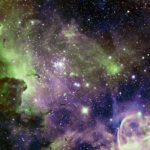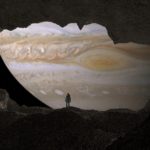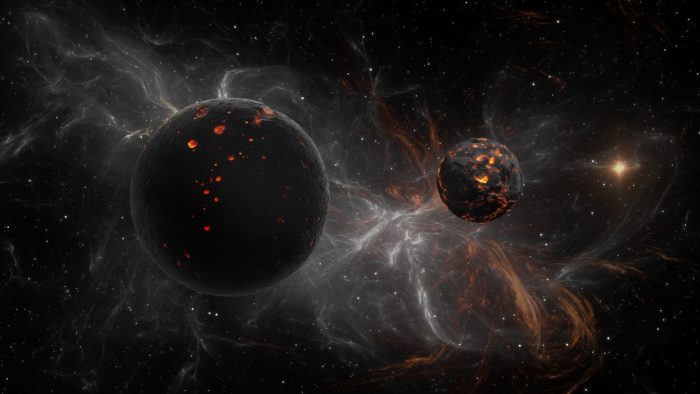
The Exoplanets – Alien Worlds Far Outside Our Solar System
- By
- September 13, 2018
- September 29, 2021
- 8 min read
- Posted in
- Space, The Universe
Most of us are familiar with the planets and moons in our cosmic neck of the woods. However, once outside our solar system and into the outer reaches of our galaxy, there are literally, according to Kepler data, billions of other worlds – exoplanets. And that is just within the Milky Way alone. Although we are only just beginning to discover planets in other galaxies (extragalactic planets), it is likely there are over 100 billion such galaxies in the Universe. The chances are then, in the entirety of the Universe, there are countless alien worlds. And that is only based on what we can see. Given that there is no end to the Universe, in both time and size, (at least how we perceive them) the possibilities really are infinite.

A depiction of exoplanets in deep space
While we are not going to get into the likelihood of alien life, intelligent or otherwise, in this article as we are more concerned with examining some of the details of only a tiny amount of these alien worlds, needless to say it is a statistical impossibility, even if only 1% of the existing planets are habitable, for the Milky Way, and even more so, the Universe as a whole, not to be awash with life. And that is based on a planet’s environment being suitable for life as we know it. If we start to think about life that might thrive in a cold environment or in the stifling heat, for example, then those odds of life out there in the vastness of space increase even more.
Before we return to the confines of our galaxy, check out the short video below. It looks at the recent confirmation of a planet outside the Milky Way.
Contents
The Kepler Planets – “Earth’s Cousin”, Kepler 452b
Perhaps it would be most fitting to begin looking at some of the more intriguing planets discovered with NASA’s Kepler Space Telescope. As of 2018, the Kepler missions were responsible for over 2,500 confirmed exoplanets with a further 2,500-plus potential discoveries awaiting confirmation. While we are not going to look at each and every discovery, some stand out more than others.
Maybe the most intriguing of these is Kepler 452b, also named “Coruscant” by NASA, and referred to as Earth 2.0 or Earth’s Cousin [1] by researchers and space enthusiasts alike. Not only is the Kepler 452b of solid composition with a rocky surface and water, it also lies in the habitable or “Goldilocks Zone”, meaning it is at the right distance from its star to sustain life. The planet lies in the Cygnus constellation, which is around 1,400 light years from Earth. Just to crystalize how far that is, if we were to travel there using our current fastest space craft, it would take us 26 million years to arrive out our destination.
While we would need to develop technology such as “warp drives” or learn to bend space and time and create portals to get there, should humans ever venture on to Kepler 452b they will find themselves feeling considerably heavier than here on Earth. This is due to the planet being around sixty percent wider and five times larger than our home planet. Should a colony ever be set up, generational changes would likely occur. Colonists would increase in overall strength, for example, as just moving around “would be like a workout everyday”. Over time, scientists suspect that people would become “stockier” to cope with the increased gravity.
Overall, the environment would be similar, but not exactly like it is on Earth.
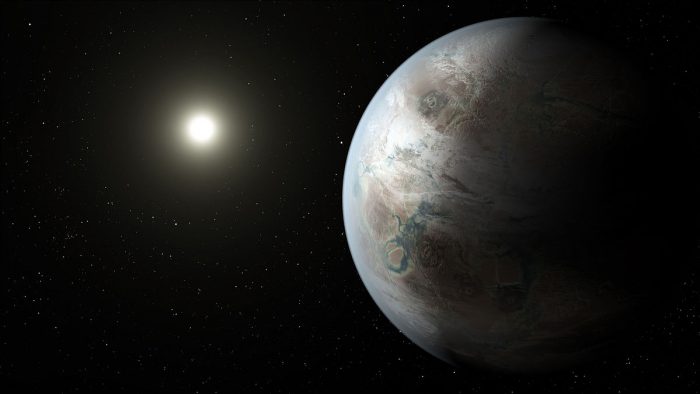
Artist-impression Kepler-452b
Other Kepler Discoveries
The first exoplanet discovered in the habitable zone on the Kepler missions was Kepler 22b. [2] And furthermore, when it was announced in 2011, as well as being suitable for living, scientists declared it (at least in theory) was a “promising spot” in the search for life outside our solar system. However, while closer than 452b, it is still over 600 light years away and would require the same still-to-be-discovered technology to reach it.
It is thought to be around 2.4 times the size of the Earth with a suspected average temperature of 72 degrees Fahrenheit (around 22 Celsius). The orbit of its star is relatively similar to ours also, with Kepler 22b taking 290 days to complete its orbit against our 365-day cycle. Whether or not there is widespread solid terrain is unknown, however. Some scientists claim the planet could be similar to the make-up of Neptune, with a huge surface ocean and a smaller rocky core.
Perhaps one of the most intriguing discoveries in this region is Kepler 16b, nicknamed “Tatooine” [3] due to its apparent similarity to the double-sunned planet in the Star Wars movies. Kepler 16b is a circumbinary planet, meaning that it orbits around two stars – essentially, it has two suns. It is around the size of Saturn and studies show it to be a cold, gaseous planet, unable to support life. That isn’t to say that other binary system planets couldn’t support life, however. And just the discovery of a planet in such a binary system was exciting. William Borucki, an investigator on the Kepler team would state that “…given that most stars in our galaxy are part of a binary system, this means the opportunities for life are much broader that if planets form only around single stars”.
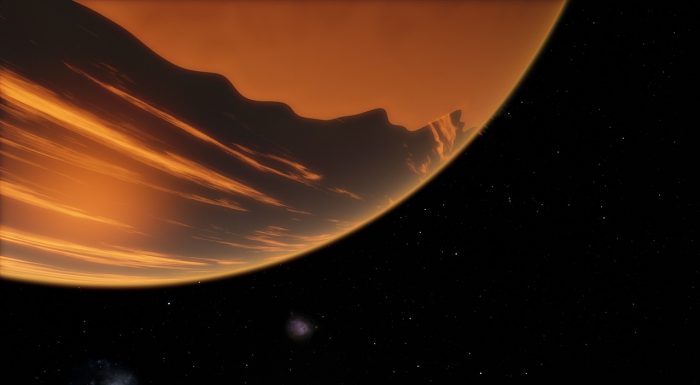
Artist’s impression of a large unknown planet
A Planet Over 12 Billion Years Old
Officially called PSR B1620-26b and otherwise known as “Methuselah” [4] is one of the oldest known exoplanets, clocking in at around 12.7 billion years old. It also resides a whopping 12,400 light years from Earth in the Scorpius constellation. It is also a behemoth of a celestial body at around 2.5 times the size of Jupiter, the largest planet in our solar system. Methuselah orbits around a pulsar and a white dwarf making it another circumbinary planet. Its discovery is further important in quashing the myth that planets are a relatively recent phenomenon in the Universe. Instead, only a “mere billion” years after the apparent Big Bang, it is likely that many planets were fully formed throughout the galaxies of space.
Another intriguing, if inhospitable world is that of 55 Cancri e, or “Janssen” in the Cancer constellation. The planet is thought to be a hell-like furnace with temperatures hovering just short of 5,000 degrees Fahrenheit. Furthermore, it is very likely to be “tidally locked”. This means that one side always faces the sun, while the other always faces away from it. At two times the size of Earth it is a “Super Earth” due to its rocky terrain. The chances of life existing there, however, are extremely unlikely. If not impossible.
It is relatively close to us, though, at only 40 light years. And while it is disputed somewhat now, scientists at one time believed that the conditions and gravity of the fiery body might be ideal for producing an abundance of diamonds. Should the technology ever exist, it would surely be only a matter of time for profit of mining said diamonds and transporting them back to Earth to attract one wealthy investor or another.
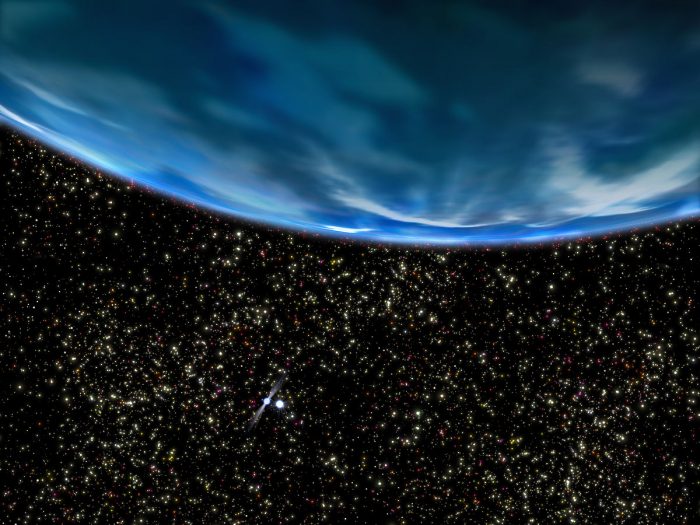
Artist impression of Methuselah
The “Darkest” Known Planet
Perhaps one of the truly strangest, maybe even ominous planets resides in the Draco system. TrES-2b, sometimes referred to as Kepler 1b, is most likely the darkest planet in the universe. It only reflects 1% of light that finds its way to the dark body. And is less reflective than the blackest acrylic paint. The fact that it is a similar size to Jupiter is why we are even able to detect it. At 750 light years from us, study continues on the planet. Not least to find out why it is so dark and what causes such a lack of reflection. In recent years scientists have discovered “faint red hues” although they don’t know what these are.
The planet HD209458b, also known as “Osiris” after the Egyptian god, [5] is also of immense interest to scientists. Not least due to the fact that it is the only known planet outside of our solar system to contain both oxygen and carbon within its atmosphere. Off the back of that discovery, scientists further found that these gases were evaporating from the planet in real time. And at an alarming rate. They were essentially watching the planet “transition” in front of them. In fact, that an atmosphere was present at all also makes this celestial body worth keeping a telescopic eye on in the coming years. The gas giant, which resides in the constellation of Pegasus, around 150 light years from Earth. Many scientists believe that what we are seeing is the death throes of a one-time huge gas giant.
Before we move on, check out the short video below. It looks at some of these far-off exoplanets in a little more detail.
Our Closest Exoplanet Neighbor – Proxima b
A little closer to Earth, near the red dwarf star, Proxima Centauri, is the exoplanet, Proxima Centauri b. This is the closest exoplanet to Earth (around 4 light years away) to reside within a habitable zone. Furthermore, Proxima b is approximately the same size as Earth and appears to have potential to support life. Proxima Centauri is part of the three-star Alpha Centauri star system, the closest star system to our solar system.
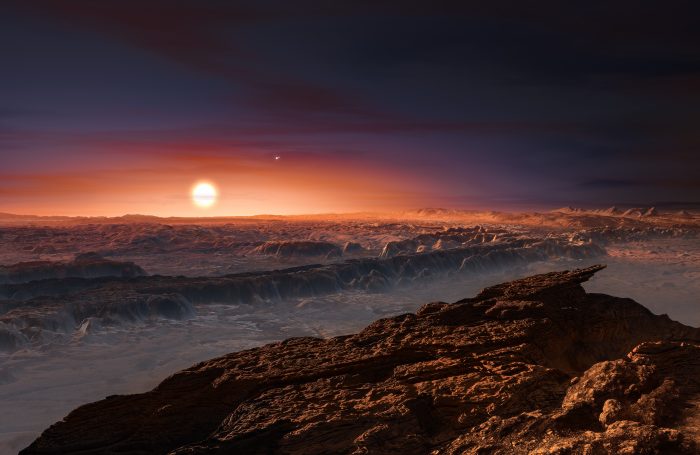
Artist-impression of Proxima-b
However, there is still much to learn about Proxima b in terms of life existing there. Or, indeed, if it could even support life. For example, its permanently locked position means one side will be likely dark and freezing cold. The other side, by contrast, is likely to exist in constant heat and light. However, the luminosity of Proxima Centauri is not at all as bright as our sun. This means the light would be more akin to a permanent sunrise or sunset. Furthermore, the atmosphere appears to be very thin, if existent at all. This would leave the planet open to constant solar winds. Incidentally, these winds are 2,000 times greater in terms of pressure than here on Earth.
Even so, the planet still might not be a write-off in terms of colonization. The solid, rocky terrain would provide a habitable environment under the ground. Similar proposals, albeit in theory, exist for colonies on the Moon and Mars, as well as further afield in Europa. Perhaps one day we will find a way to travel the huge distances in a reasonable time. Then, Proxima b could very well be one of the first places we would look to visit.
The short video below looks at Proxima b, and how the surface might look should we ever reach it.
The Mysterious Ninth “Roaming” Exoplanet
While these planets are all many light years away from Earth, what should we make of the persistent, and increasingly louder, claims of a “rogue planet” [6] (which would also be an exoplanet) that is supposedly lurking away somewhere in the outer edges of our solar system, perhaps re-entering the solar system from its impossibly long and drawn-out orbit.
At the moment, this huge giant of a planet is around twenty light years from Earth. And is around twelve times the size of Jupiter. Unlike most planets, it has no host star and its very existence looks set to challenge accepted thinking. Given the size of such a planet, if it was to venture into our cosmic neighborhood, the effect it would have on the planets and their orbits would surely be devastating. Might the apparent claims of increased earthquakes and tectonic activity here on Earth [7] in recent years share a connection with our mysterious celestial visitor?
With these latest revelations in mind, what should we think of such notions of “Planet X”? Or of “Nibiru and The Anunnaki” as written of by Zecharia Sitchin in his Earth Chronicles books. Even if those finer details and his translations are incorrect, it would certainly mean the claims of such a planet in the distant past – one whose inhabitants might have interacted with humanity here on Earth – would require a restudy. As unlikely as it might be, might some of the devastation myths be the result of such a rogue planet?
The short video below looks at this in a little more detail.
References
| ↑1 | Kepler-452b: What It Would Be Like to Live On Earth’s ‘Cousin’, Mike Wall, Space, July 24th, 2015 https://www.space.com/30034-earth-cousin-exoplanet-kepler-452b-life.html |
|---|---|
| ↑2 | Kepler-22b: Facts About Exoplanet in Habitable Zone, Elizabeth Howell, Space, November 15th, 2017 https://www.space.com/24128-kepler-22b.html |
| ↑3 | NASA’s Kepler Mission Discovers a World Orbiting Two Stars, NASA, September 15th, 2011 https://www.nasa.gov/mission_pages/kepler/news/kepler-16b.html |
| ↑4 | Oldest Known Planet Identified, NASA, May 23rd, 2008 https://www.nasa.gov/multimedia/imagegallery/image_feature_76.html |
| ↑5 | Dying Planet Leaks Carbon-Oxygen, NASA, February 19th,2004 https://www.nasa.gov/vision/universe/newworlds/Osiris_leaks.html |
| ↑6 | Massive rogue planet with unexplained aurora glow discovered drifting far beyond our solar system, Josh Gabbatss, The Independent, August 7th, 2018 https://www.independent.co.uk/news/science/rogue-planet-aurora-glow-discovered-space-brown-dwarf-solar-system-a8478141.html |
| ↑7 | Why are we having so many earthquakes? Has naturally occurring earthquake activity been increasing? Does this mean a big one is going to hit? OR We haven’t had any earthquakes in a long time; does this mean that the pressure is building up for a big one?, USGS https://www.usgs.gov/faqs/why-are-we-having-so-many-earthquakes-has-naturally-occurring-earthquake-activity-been?qt-news_science_products=0#qt-news_science_products |
Fact Checking/Disclaimer
The stories, accounts, and discussions in this article may go against currently accepted science and common beliefs. The details included in the article are based on the reports, accounts and documentation available as provided by witnesses and publications - sources/references are published above.
We do not aim to prove nor disprove any of the theories, cases, or reports. You should read this article with an open mind and come to a conclusion yourself. Our motto always is, "you make up your own mind". Read more about how we fact-check content here.
Copyright & Republishing Policy
The entire article and the contents within are published by, wholly-owned and copyright of UFO Insight. The author does not own the rights to this content.
You may republish short quotes from this article with a reference back to the original UFO Insight article here as the source. You may not republish the article in its entirety.
